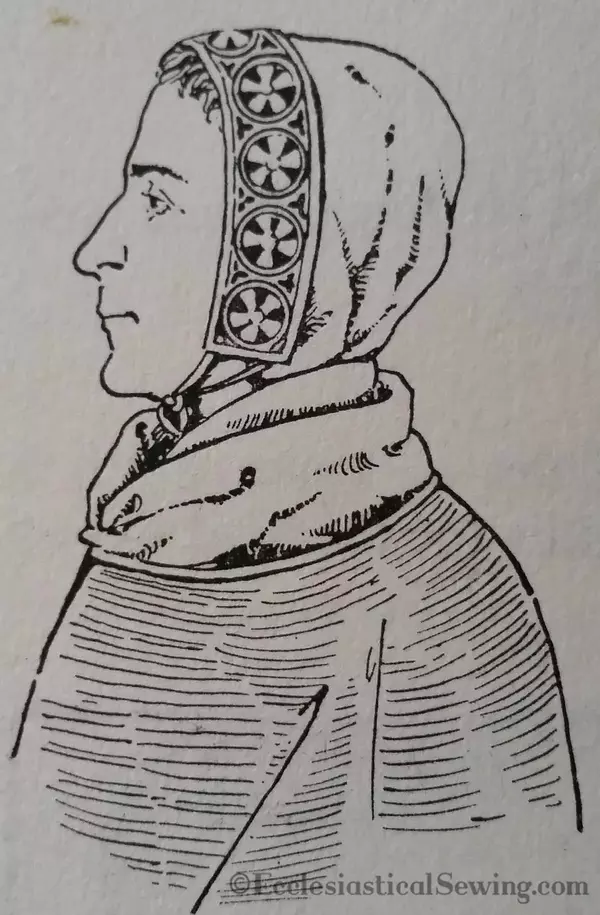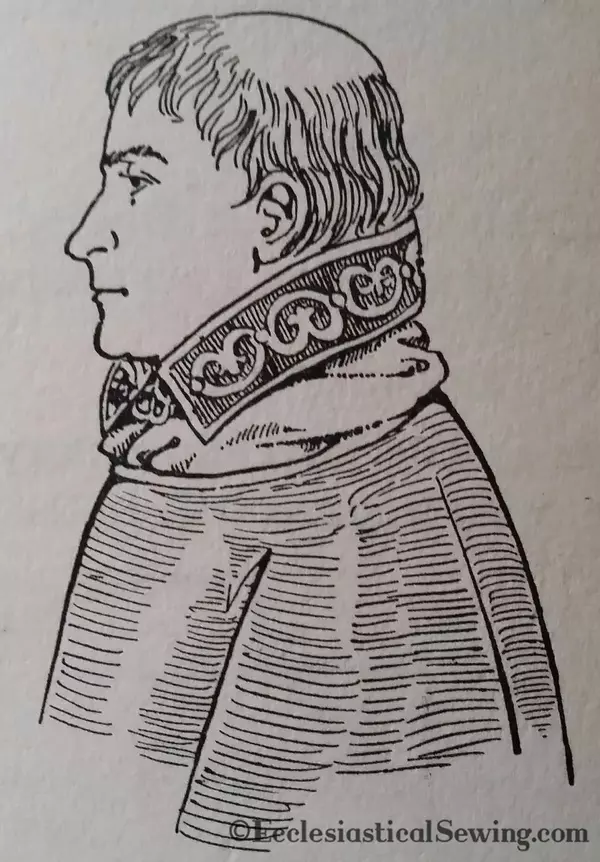Part I: The Amice–Norris
Part I: The Amice–Norris
Over the next few days, I would like to talk to you about certain ecclesiastical vestments that are worn on the head. Often we focus our gaze on the voluptuous garments that cover our ministers of the church. It is important to know each distinct garment and its history. Based on practical reasoning, traditions are now carried on without knowing their origin. When we travel to Europe, view exhibits in a museum, or look at old volumes, we see all kinds of garments that our ministers no longer wear, or wear an entirely different variation. Today the topic is Part I: The Amice–Norris, its changes and history.
Amice: From Roman Accessory to Liturgical Vestment
Now technically the amice is not always worn on the head. As the first item of liturgical vestments, I am including it in this three-part series because it comes into contact with the head and is typically worn about the neck; and is on occasion seen worn as a type of headwear or head covering. The amice started as a mere accessory to Roman dress in the period of the Roman Republic. Circa the third century B.C., a linen cloth was tucked around the neck and under the garment. During the Imperial Roman era, this cloth was increased in size and was placed around the neck and shoulders in the same way a shawl would be worn.
When this garment began to be used by the Christian clergy in worship service as an ecclesiastical vestment, it was known as the amice or in England as a superhumeral. The most common form for this garment is shown below. It was a linen cloth that had strings to tie around the head. One could decorate it with an orphrey or a fillet of gold. In the twelfth century, embroiderers began to embroider a large cross across the whole rectangular cloth.
1 Norris, Herbert. Diagram of Amice. 1950. Church Vestments: Their Origin & Development. New York: E. P. Dutton & CO. INC., 1950.
Amice Garment
A priest puts on the amice as the first garment. While offering up prayers and intercessions, he wears it on his head and then continues to dress. After putting on the alb, he pushes the amice off his head and wears it around his neck as a collar. The long cords of the amice are then tied around the alb under the arms, crossed around the back, and brought back to the front to be tied. In certain situations, people keep the amice on their heads for practical reasons, such as staying warm during a processional or in a particularly drafty church.
2 Norris, Herbert. Amice with Orphrey on Head. 1950. Church Vestments: Their Origin & Development. New York: E. P. Dutton & CO. INC., 1950.
3 Norris, Herbert. Amice with Orphrey’s Round Neck. 1950. Church Vestments: Their Origin & Development. New York: E. P. Dutton & CO. INC., 1950.
Amice in Various Christian Denominations
Some priests or pastors in the Roman Catholic Church, the Lutheran Church, the Anglican Church, and some other denominations still wear the amice today. They wear it on the head or around the neck, yet both are still considered an amice. When considering construction, bear in mind that the collar on an amice is referred to as apparel. One can make the amice with simple white linen and embroider a cross on the back. The amice can feature a linen collar that one can embroider in colors or white, heavily embroidered, or made with nice fabric. Constructing removable apparel is a trick that allows laundering of the linen, with the option to put the collar back on afterward. So for a more thorough reading on the amice, I highly recommend the sixth chapter in Church Vestments: Their Origin & Development by Herbert Norris.
~Nihil Sine Deo~
Be sure to visit our online store front Ecclesiastical Sewing where you may shop for Liturgical Fabrics, altar linen fabrics, church vestment-making patterns, liturgical machine embroidery designs, church vestment trims and notions and so much more. You may also find us on Ecclesiastical Sewing on Facebook, Twitter, and Pinterest. Sign up for our mailing list at the bottom of the page on our online store front and receive a free copy of our Small Linens Booklet as our way of saying thank you for following along.
Bibliography
Norris, Herbert. Church Vestments: Their Origin & Development. New York: E. P. Dutton & CO. INC., 1950.
The Pallium-Herbert Norris
Headwear Part III: The Tiara–Norris
The Cope–Norris
The First Chapter of a New Book
The Pallium & The Ontological Argument
Lutheran Bäffchen or Clergy Collar
Amice Design Ideas
What Vestments Does a Priest or Pastor Need?
What Vestments Does a Priest Need: Part 2
Reading Time for a Stormy Night









 RSS - Posts
RSS - Posts
You must be logged in to post a comment.